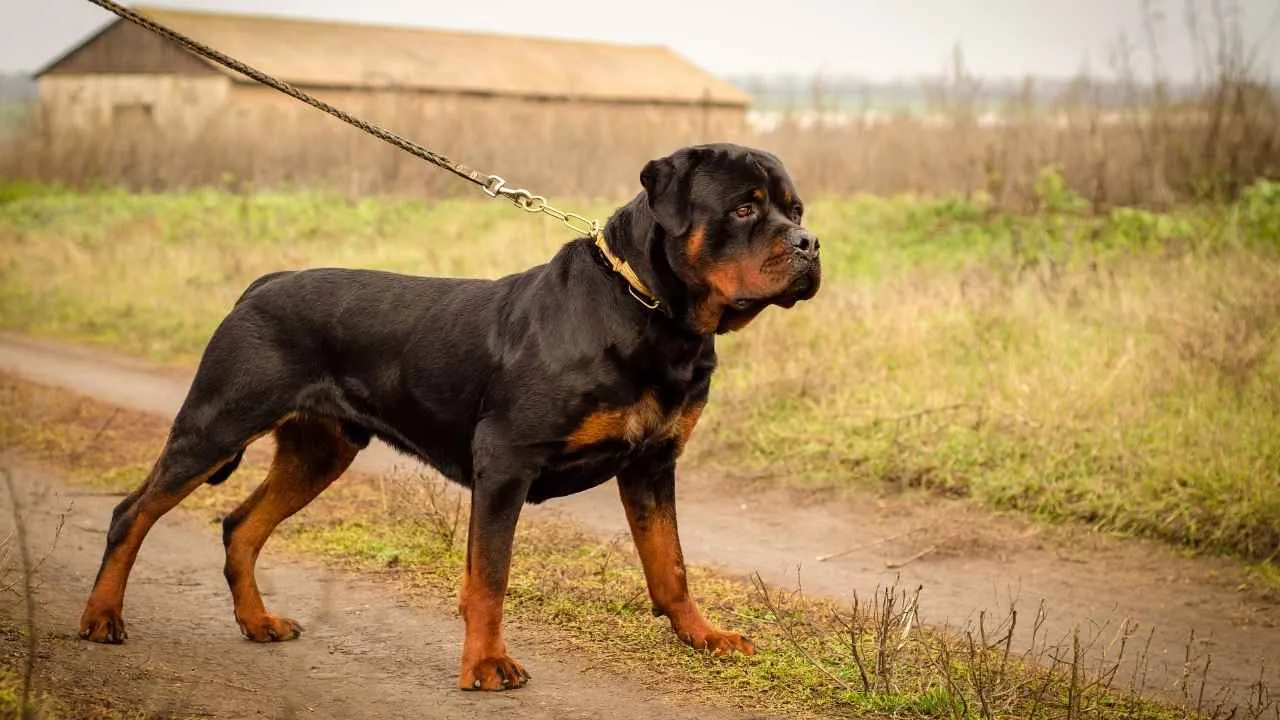When it comes to dog ownership, not all breeds are treated equally, especially in regions where breed-specific legislation (BSL) exists. These laws place restrictions or outright bans on certain breeds deemed dangerous, often based on their perceived history of aggression or involvement in incidents.
The list of restricted dog breeds varies from place to place and has been compiled and monitored by advocacy groups like the Responsible Dog Owners of the Western States. These organizations aim to promote responsible pet ownership while navigating the ongoing debate surrounding breed regulation. Interestingly, even the U.S. military enforces bans on specific breeds within their domestic housing areas, a policy implemented in the late 2000s across all service branches.
But the issue remains deeply divisive. Critics of breed-specific laws argue that behavior is shaped more by environment and training than by genetics. Many dogs labeled as “dangerous” may simply be the victims of neglect or misuse, and when raised in loving, structured homes, they can be as gentle and well-mannered as any other breed.
Restricted Dog Breeds
1. American Pit Bull Terrier
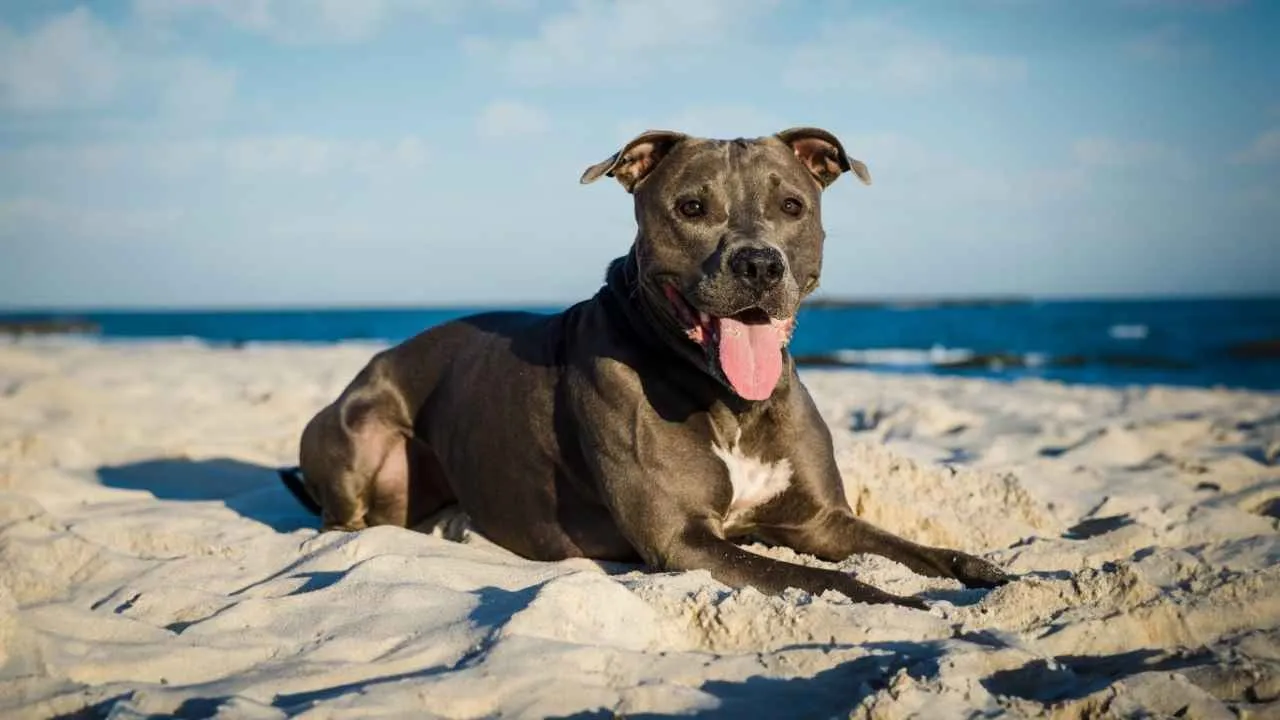
Among the most widely recognized names on the restricted breed list, the American Pit Bull Terrier frequently faces bans in cities, housing communities, and even U.S. military bases. PetMD states that due to their intelligence and high energy levels, Pit Bulls require dedicated owners who can provide ample exercise, mental challenges, and engaging activities to keep them happy.
Their strong, muscular build and powerful jawline often contribute to a public perception of danger, especially when combined with media portrayals and their unfortunate association with dog fighting. Despite their loyal and affectionate nature when properly raised, many regions continue to enforce strict rules against owning or housing this breed.
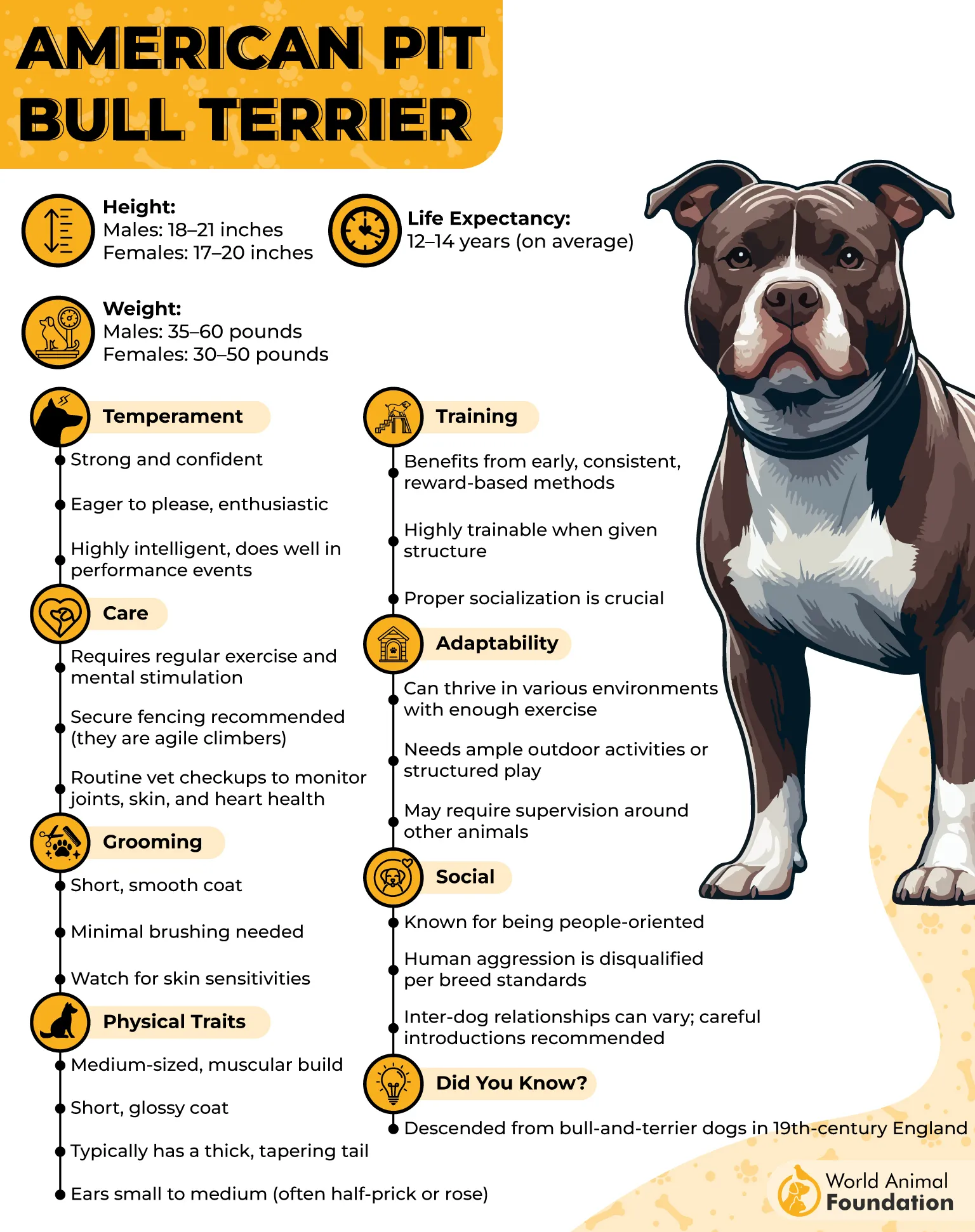
History
The American Pit Bull Terrier has deep historical roots that contribute to its restricted status. Originally bred in 19th-century England for bull baiting, a cruel blood sport, the breed evolved into a tenacious and agile fighter. When bull baiting was outlawed, these dogs were used in underground dog fighting rings, a legacy that has left a lasting stigma.
Upon their arrival in the U.S., their strength and resilience were admired, but their fighting past continued to influence public policy. Over time, their image became further tarnished by irresponsible ownership and misuse, making them a target of breed-specific legislation across multiple countries, including the U.K.
Fact: The U.S. military began banning American Pit Bull Terriers from domestic housing and bases starting in 2008–09.
2. Staffordshire Bull Terrier
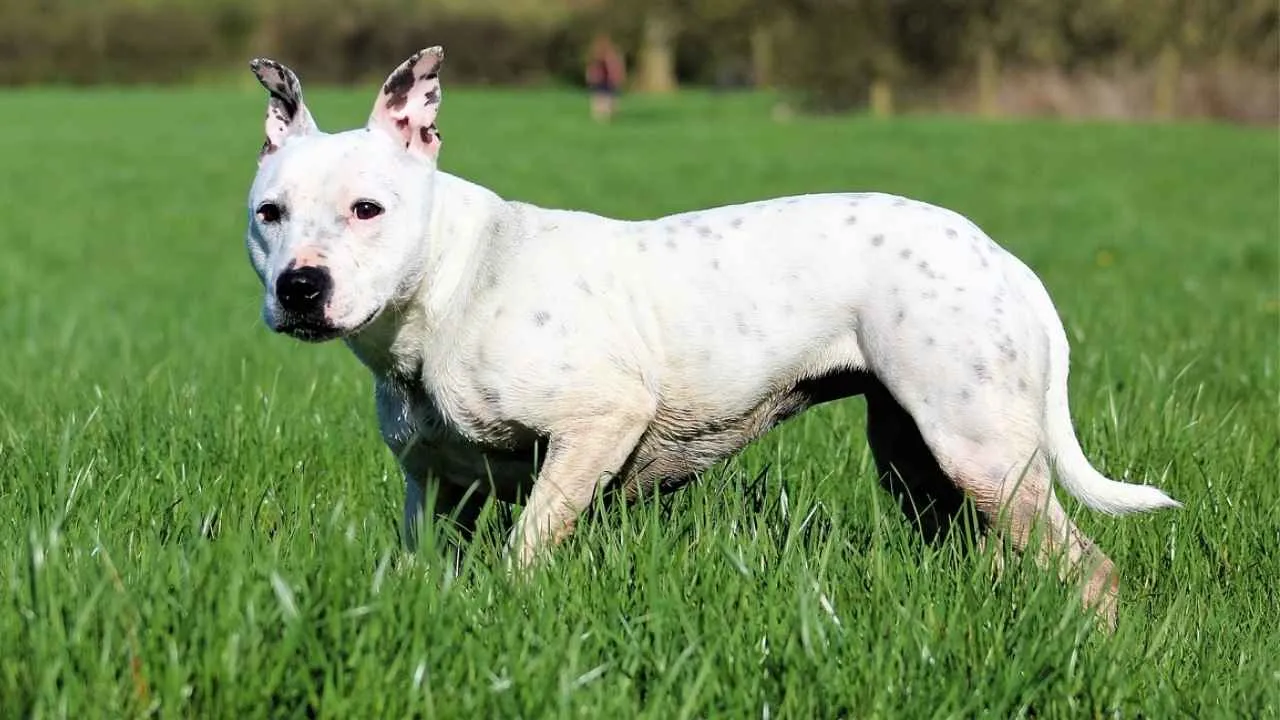
Often grouped under the generalized “pit bull” label, these dogs are restricted in various municipalities and housing complexes, particularly where legislation targets dogs based on appearance or ancestry. According to the AKC, the Stafford needs consistent physical activity to maintain both mental and physical well-being.
This can include activities like fetching a ball in the yard, accompanying an owner on a run or bike ride, or enjoying a long hike in nature. Their stocky frame, broad head, and muscular build contribute to a misunderstood image, despite their affectionate and loyal nature when properly raised. Their past has played a large role in shaping current restrictions.
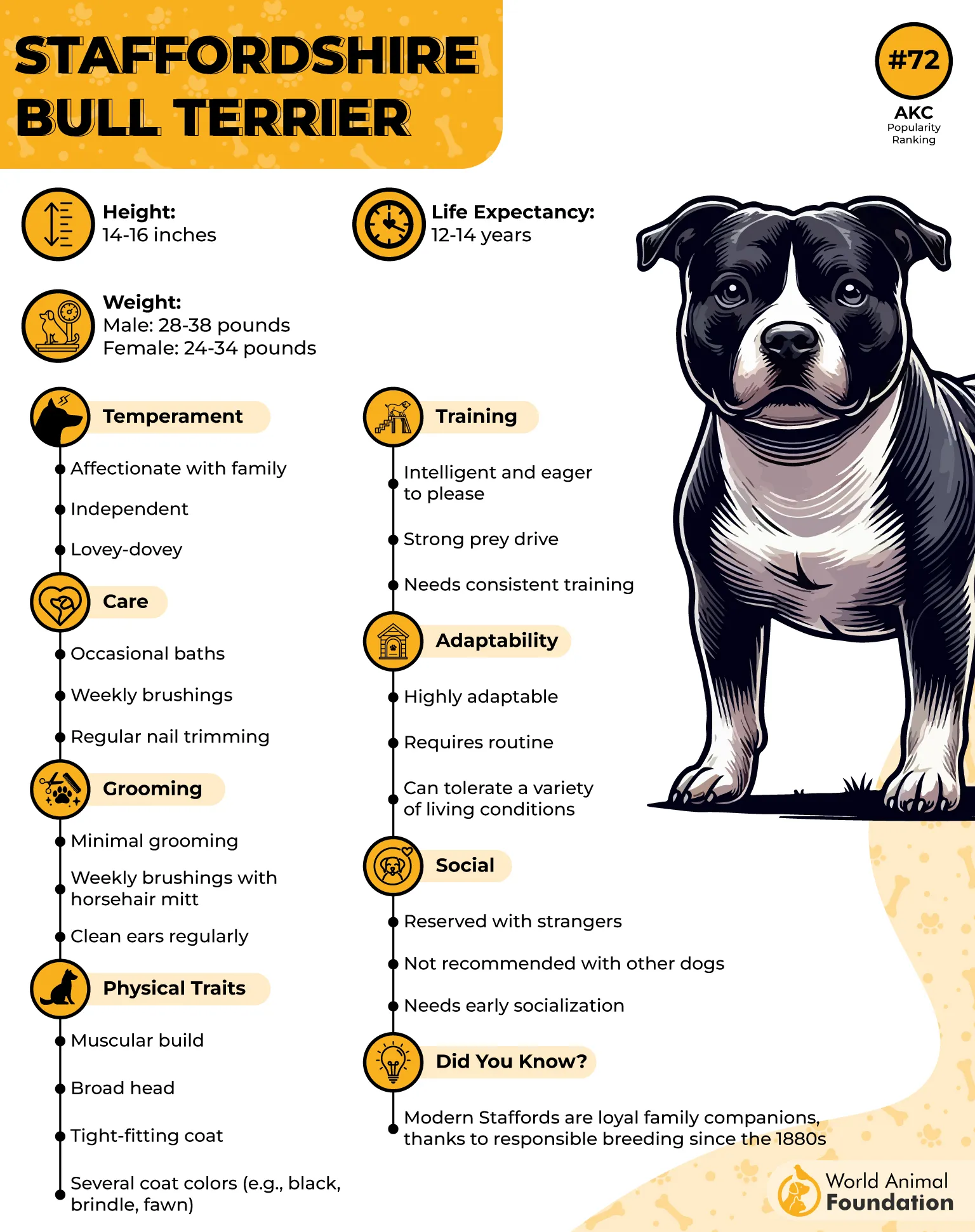
History
Originating in 19th-century England, the Staffordshire Bull Terrier was developed for bull baiting and dog fighting. Small but powerful, these terriers were bred to be agile and determined in the fighting ring. After the decline of these cruel blood sports, the breed underwent a transformation through careful and responsible breeding.
Their fierce legacy was softened, and they emerged as reliable, friendly pets, especially known for their gentle nature with children. Still, their appearance and history keep them under scrutiny in many places, including among the U.S. military’s list of restricted breeds.
Fact: Despite being widely recognized today for their loyalty and kid-friendly temperament, Staffordshire Bull Terriers are still banned or restricted on many U.S. military bases.
3. Rottweiler
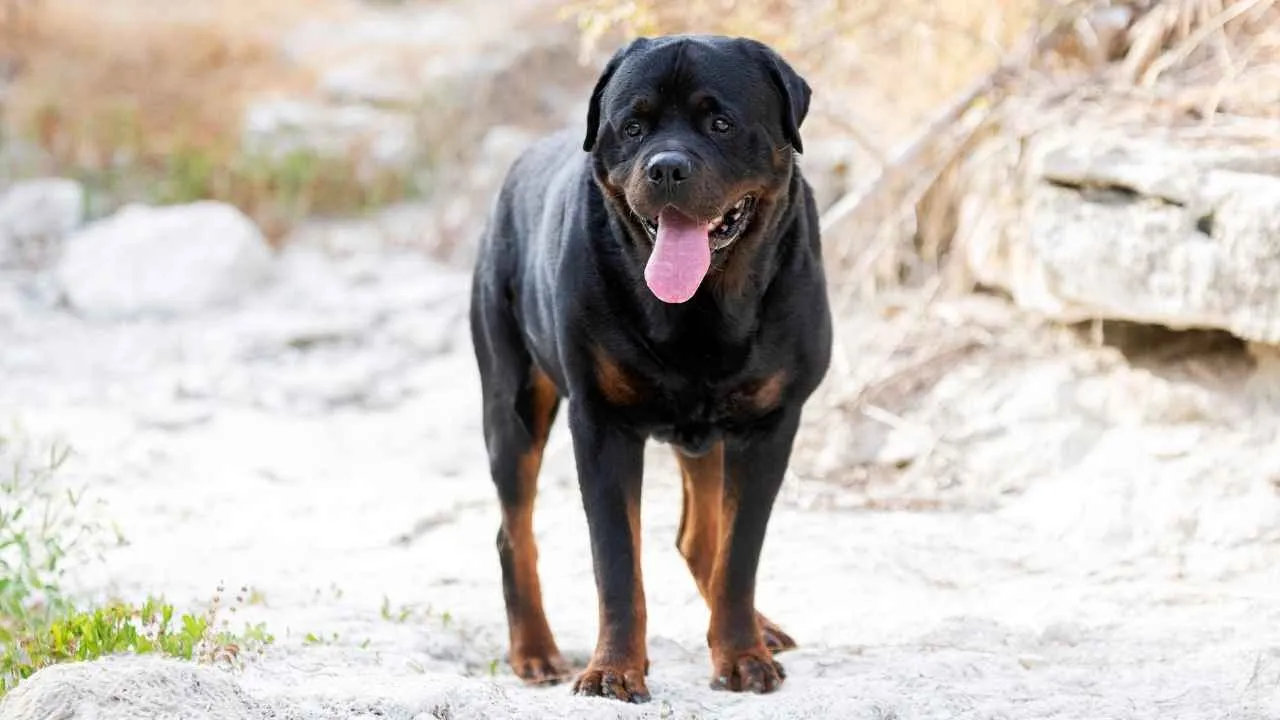
With their large, muscular build and a bite force of 328 PSI, Rottweilers are powerful protectors that often raise concern among lawmakers and property managers. Purina reports that the Rottweiler is a strong, brave, and loyal breed.
Their territorial instincts and wariness of strangers can sometimes lead to aggressive behavior if not properly managed. Though fiercely loyal to their family, Rottweilers require experienced, attentive owners to channel their protective nature safely, especially in households that regularly welcome visitors.
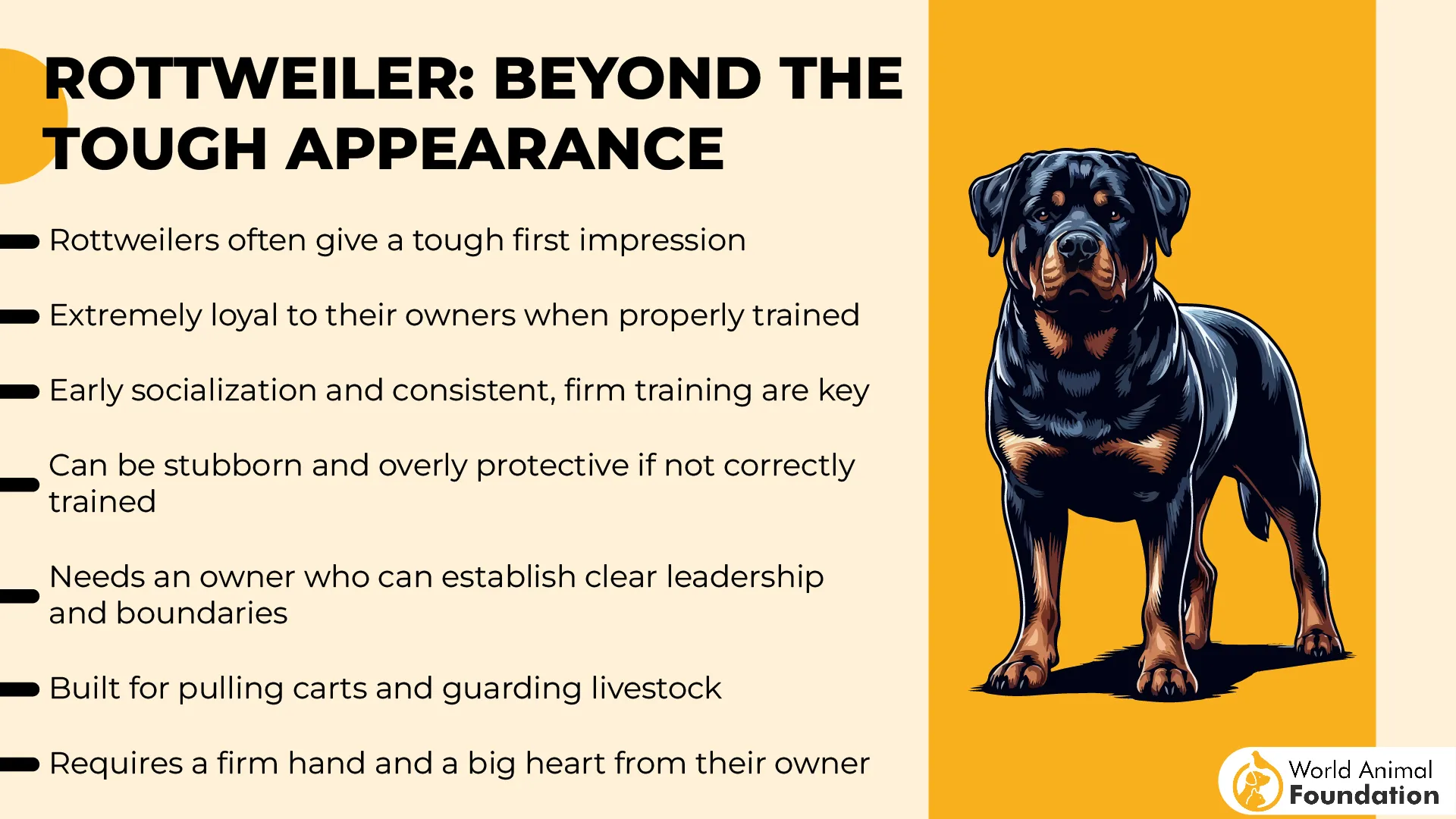
History
The roots of this dangerous dog date back to ancient Rome, where they served as drover dogs tasked with herding and guarding livestock for the Roman legions. These ancestors of the modern Rottweiler were strong, intelligent, and tireless.
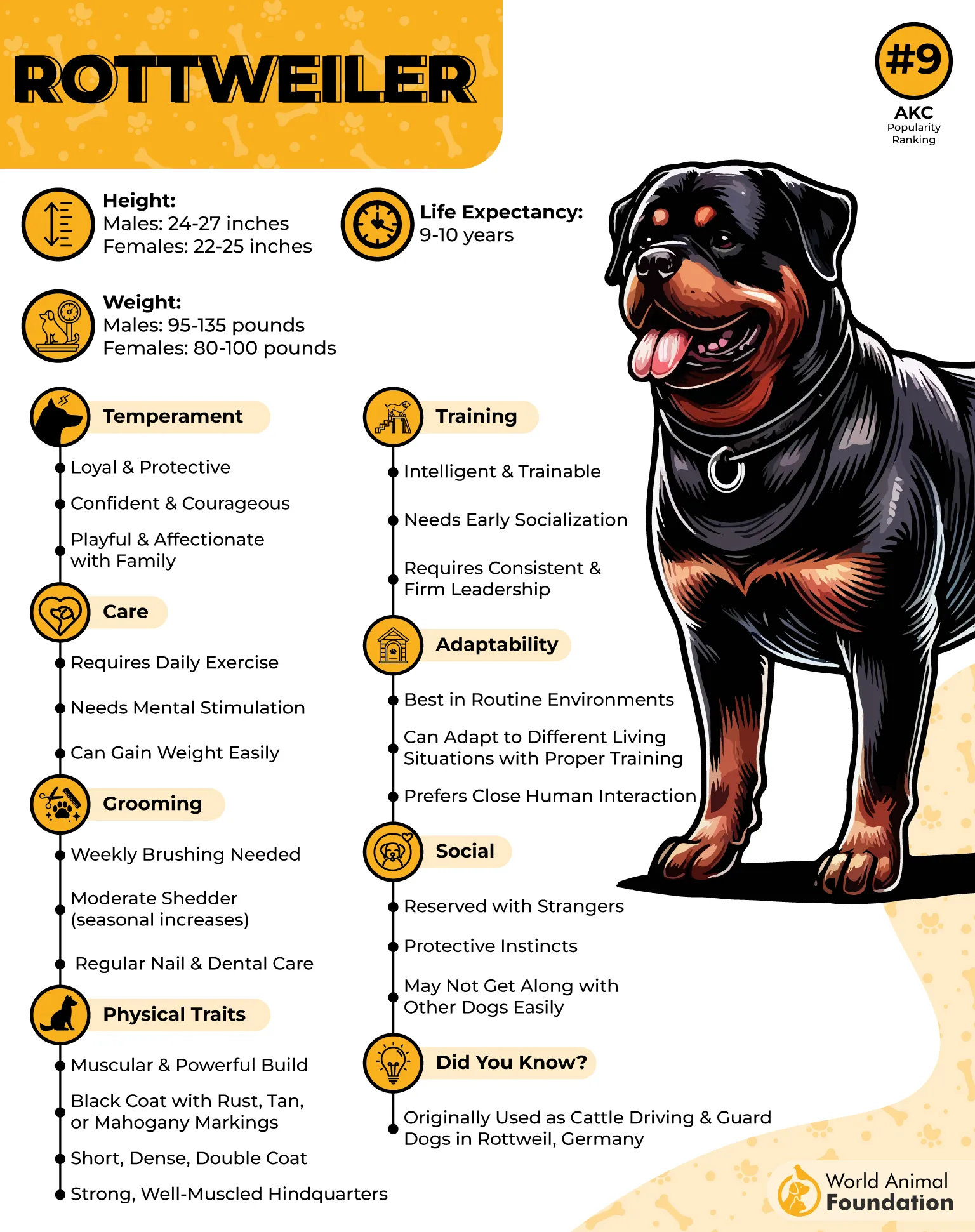
As the Roman Empire crumbled, these dogs found a new purpose in the German town of Rottweil, where they became known as the “Rottweiler Metzgerhund,” or Butcher’s Dog of Rottweil, guarding cattle and their owners’ earnings. Their legacy of guarding continues today, contributing to the breed’s perception as potentially dangerous, and leading to restrictions on military bases and in multiple municipalities.
Fact: These large dogs were responsible for 45 fatal attacks during a multi-year study and are banned by the U.S. military from being housed on bases.
4. American Bulldog
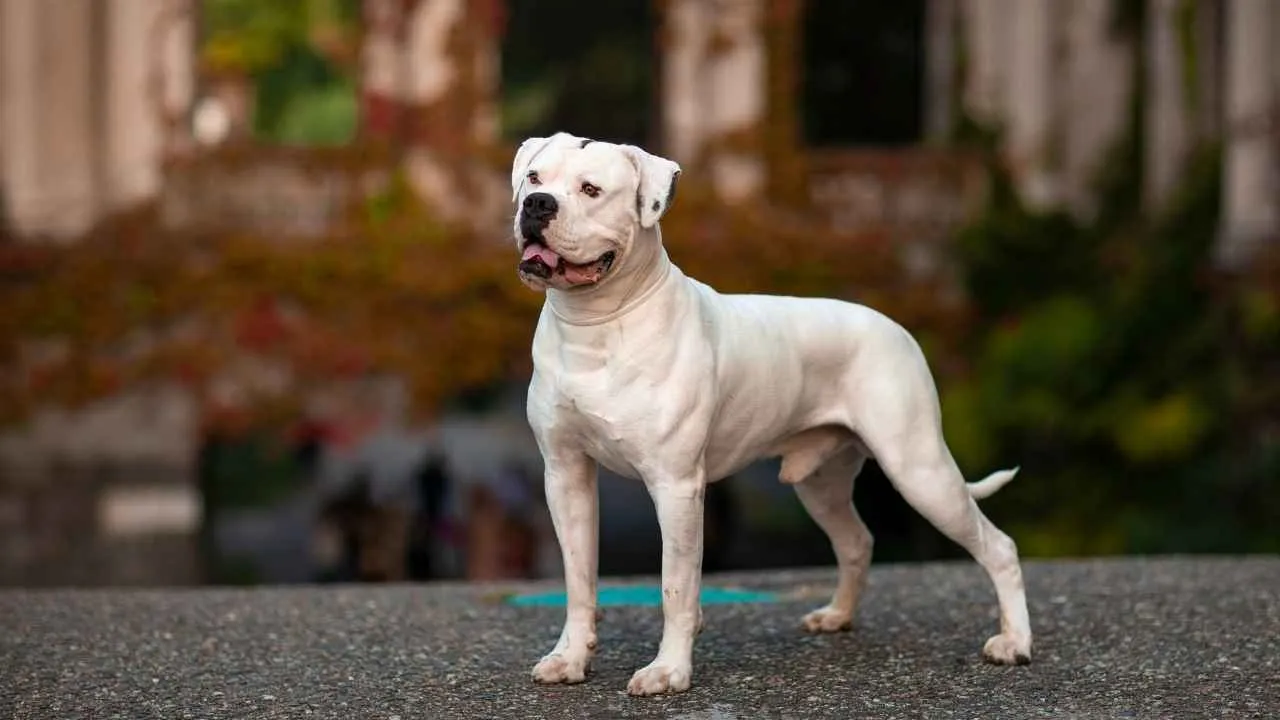
With a strong jaw, high bite force, and muscular physique, this breed has occasionally been involved in fatal incidents, contributing to its controversial status. Despite their loyalty and intelligence, their strength and territorial instincts can be challenging for inexperienced dog owners.
As a result, American Bulldogs are restricted in several U.S. jurisdictions and housing communities, and are sometimes banned outright.
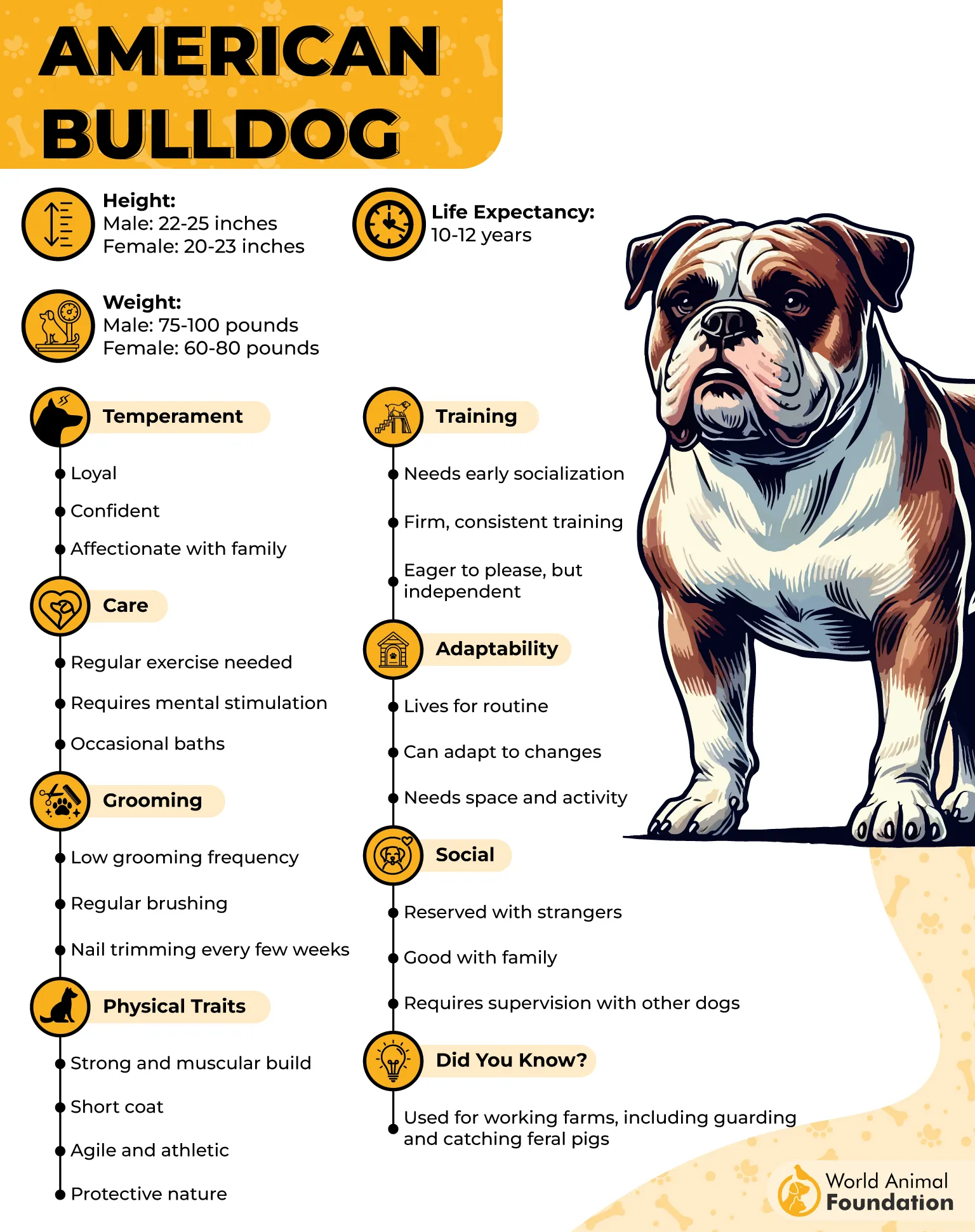
History
Originally brought to America by working-class immigrants in the 17th century, American Bulldogs were bred to be all-purpose farm dogs. Their early roles included guarding property, chasing cattle, and even hunting wild hogs. Unlike the more docile British Bulldog, this breed retained its athleticism and working drive.
Over the centuries, the American Bulldog’s reputation as a resilient and tenacious protector became both a strength and a source of concern. While many are affectionate with families, their strong guarding instincts have contributed to perceptions of aggression, especially when improperly trained or socialized.
Fact: American Bulldogs were responsible for 15 fatal attacks during a multi-year study, accounting for 3.5% of all deadly incidents related to dogs.
5. Perro de Presa Canario
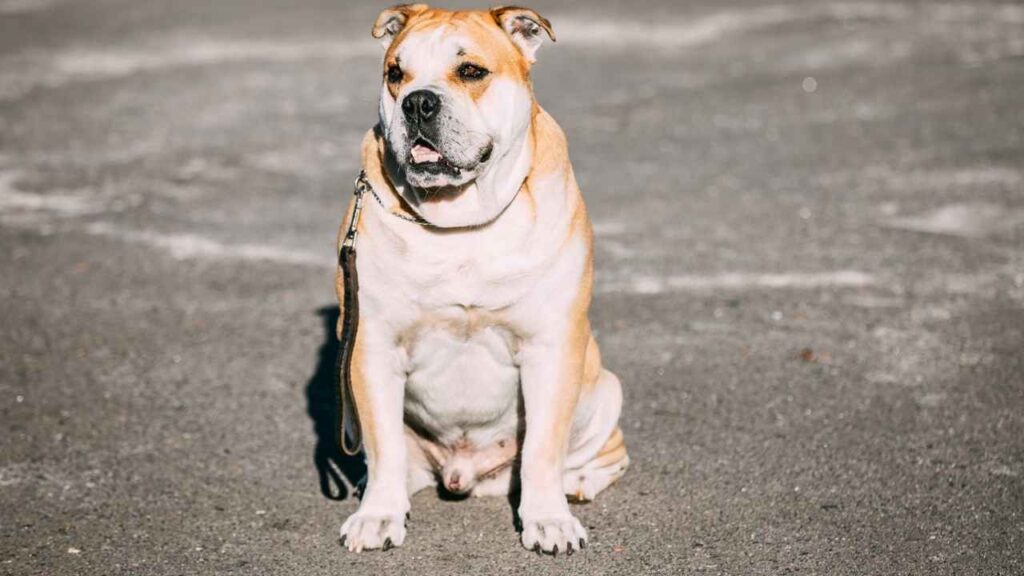
Recognized for its imposing frame and dominant presence, the Perro de Presa Canario is a breed that often finds itself on restricted or banned lists in various regions, including Australia and New Zealand, due to concerns over safety and aggression.
Known for its deep bark, muscular build, and strong guarding instincts, this breed is intensely loyal to its family but wary of strangers. Their formidable appearance and territorial nature contribute to their status as a restricted breed in multiple jurisdictions.
History
The origins of the Canary Dog trace back to the Canary Islands, where these dogs were developed by crossing several Spanish and pre-Hispanic breeds. Historically bred for guarding farms, herding cattle, and eliminating stray or wild dogs, their strength and fearlessness were prized traits.
The breed’s genetic foundation includes the now-extinct Iberian Presa and Bardino Majorero, both known for their intelligence, guarding ability, and physical resilience. In the early to mid-20th century, dog fighting added a darker chapter to the breed’s history, contributing to modern restrictions.
By the 1980s, preservation efforts reignited interest in the breed, emphasizing its working roots and balanced temperament under responsible ownership.
Fact: Due to past incidents and historical use in guarding and fighting, the Presa Canario is banned in several countries, including Australia and New Zealand.
6. Wolf Hybrid
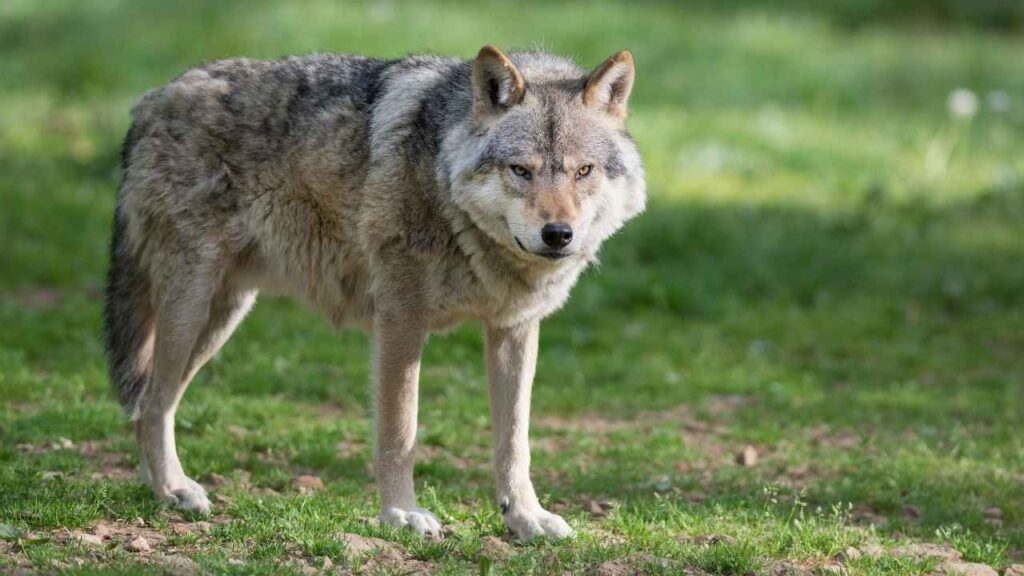
Known for their mystique and striking resemblance to their wild ancestors, Wolf Hybrids often appear on restricted dog breed lists across numerous states and municipalities. These animals are the result of crossbreeding a domestic dog with a wolf, producing an animal that is part pet, part predator.
Due to their unpredictable behavior and high physical and mental demands, wolf hybrids are frequently banned or require special permits for ownership, even on U.S. military bases.
History
Wolf Hybrids emerged from human fascination with wolves and a desire to combine the loyalty of dogs with the primal strength and independence of wolves. While interbreeding can occur naturally, it’s rare; most wolf hybrids are intentionally bred by humans. The appeal lies in their exotic nature, but their lineage includes wild traits that can’t be trained away.
Unlike domestic dogs, wolves have evolved for survival in harsh environments without human support, leading to behavioral issues in hybrids, such as neophobia, stress-related aggression, and a strong prey drive. These factors, coupled with their specialized dietary and spatial needs, have prompted many states to restrict or ban their ownership outright.
Fact: The U.S. military includes Wolf-Dog Hybrids on its list of banned breeds from domestic bases and privatized housing.
7. American Staffordshire Terrier
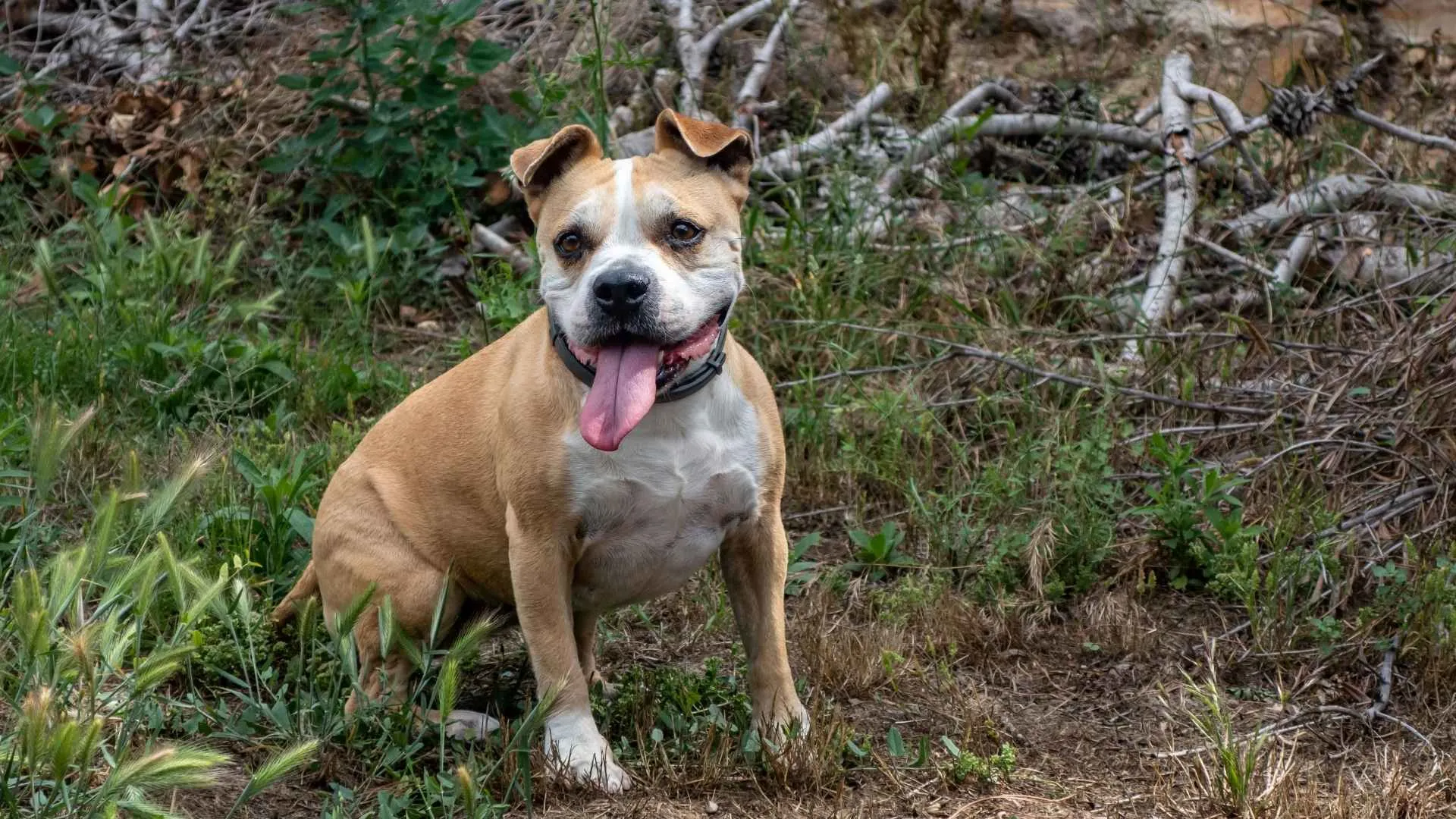
The American Staffordshire Terrier, often confused with its close relative, the American Pit Bull Terrier, is another breed commonly affected by breed-specific legislation. Despite its affectionate and loyal nature when properly raised, this muscular and determined breed is restricted in many regions due to its historical association with aggressive dog sports and its physical strength.
Britannica states that the American Staffordshire Terrier is a powerful, well-built dog with a solid frame, broad head, and prominent cheeks. It typically has “rose” ears, where the tips fold backward, and these are sometimes cropped short. Their powerful jaws and tenacious demeanor, while valuable in working roles, have unfortunately contributed to misconceptions about their behavior in the wrong hands.
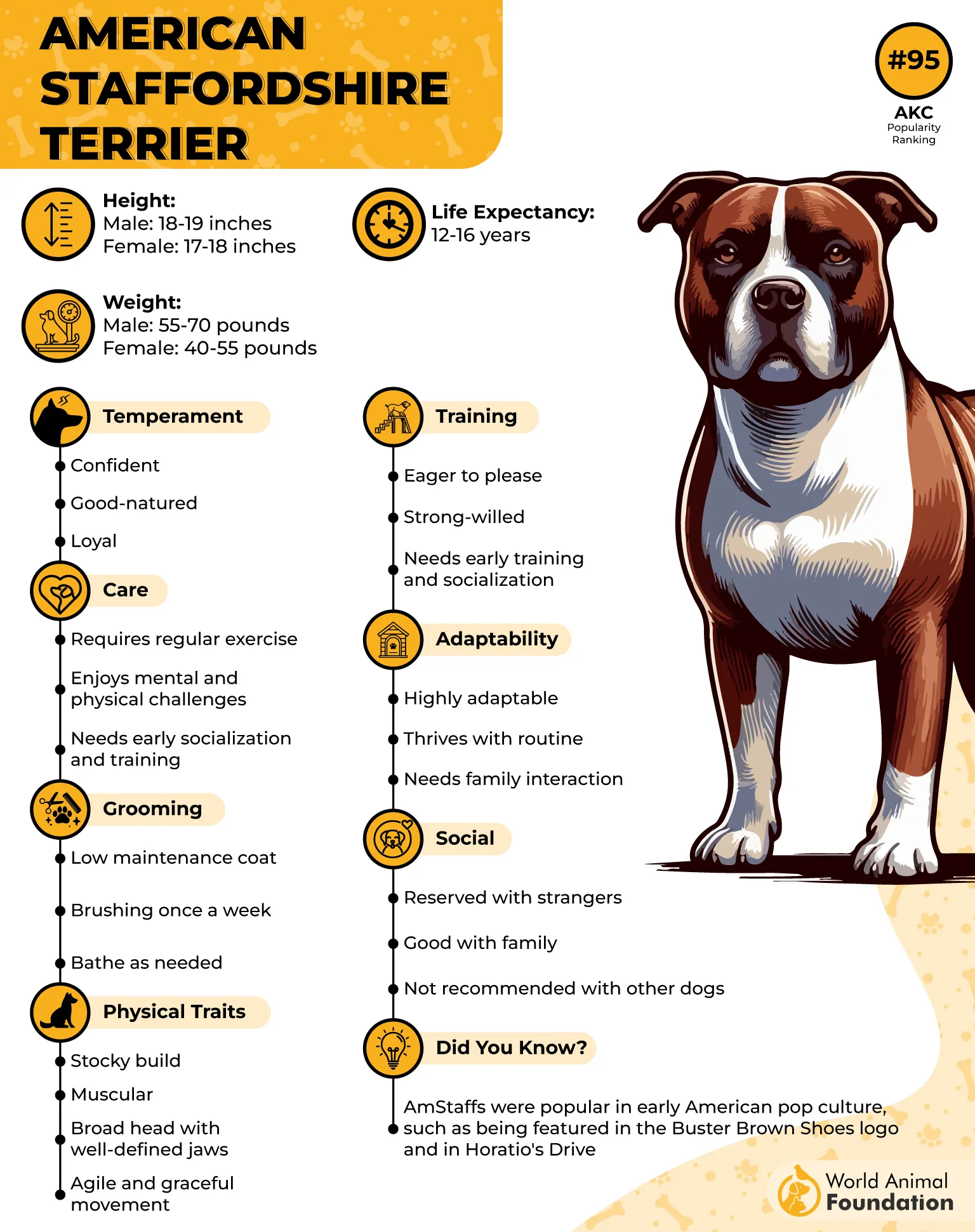
History
The origins of the American Staffordshire Terrier can be traced back to crosses between bulldogs and mastiffs in England, originally used in brutal sports like bull baiting and dog fighting. When these practices were outlawed, the breed transitioned into roles such as vermin hunting and general farm work, especially in the United States.
There, breeders focused on developing a more stable and affectionate temperament. By the early 20th century, the breed had become a symbol of American loyalty, even earning a spot in pop culture history as “Pete the Pup” in the Our Gang comedies. Nonetheless, its early fighting roots still inform many modern-day restrictions.
Fact: The American Staffordshire Terrier is one of the banned dog breeds in certain parts of the United States due to its historical association with dogfighting.
Conclusion
Breed-specific legislation continues to spark passionate debates among dog owners, lawmakers, and animal welfare advocates. While restrictions on certain dog breeds like the American Pit Bull Terrier and the American Staffordshire Terrier are based on historical associations with aggression or fighting, many argue these laws overlook individual behavior and the impact of responsible ownership. It’s crucial to understand that not all dogs of a particular breed are dangerous; most dogs, when raised in nurturing environments with proper training, become loyal and affectionate companions.
Moreover, breed restrictions don’t stop with terriers. In some areas, German Shepherds, Siberian Huskies, and other dogs have also faced limitations based solely on the animal’s breed, despite often serving roles as service dogs, police K9s, or family pets. Instead of blanket bans, advocates call for legislation that promotes owner accountability, education, and proper training. As more is learned about canine behavior and responsible breeding, many hope the focus will shift from restricting breeds to supporting the potential of every dog, regardless of its lineage, to be a well-adjusted and loving part of the community.


